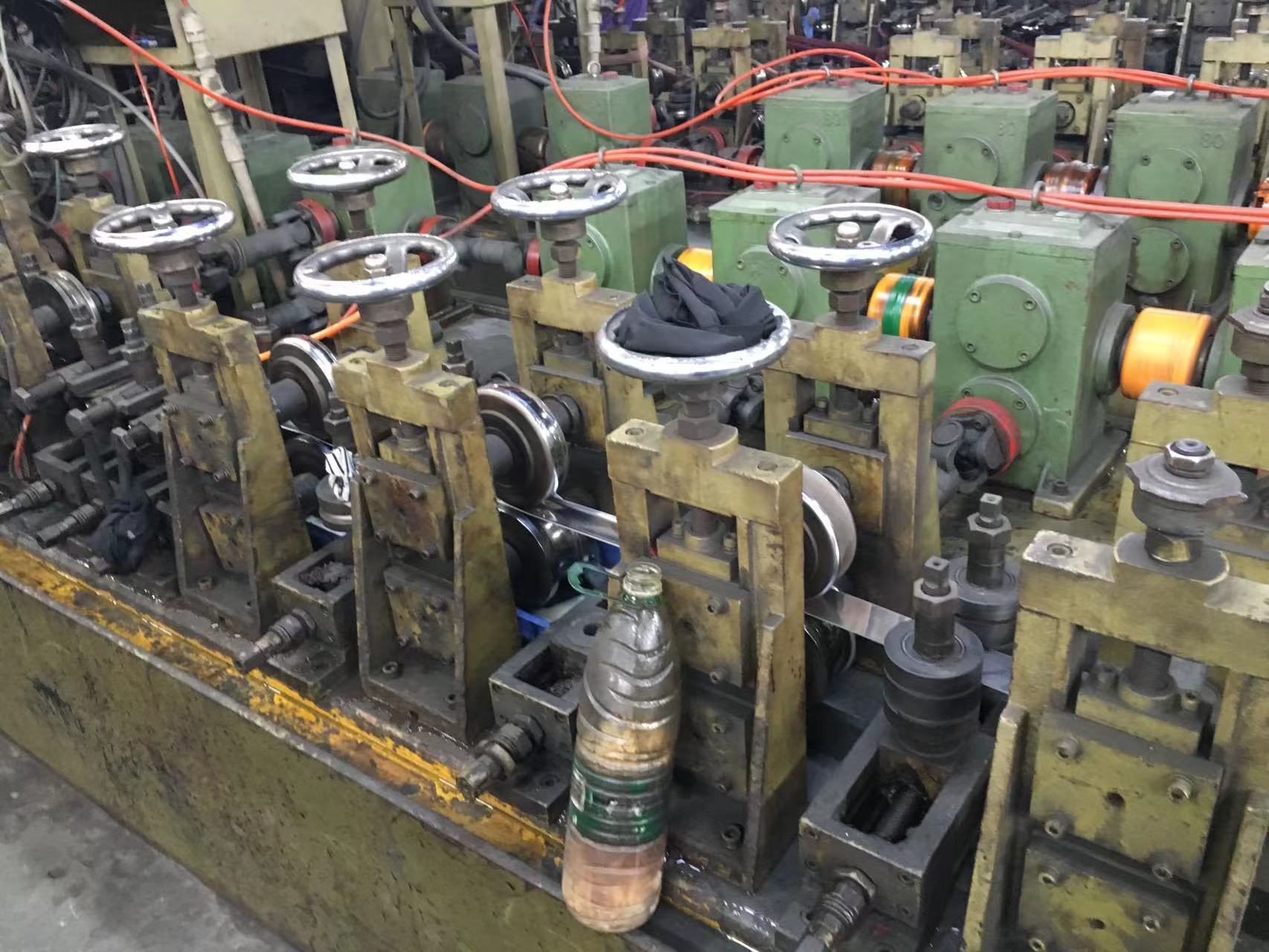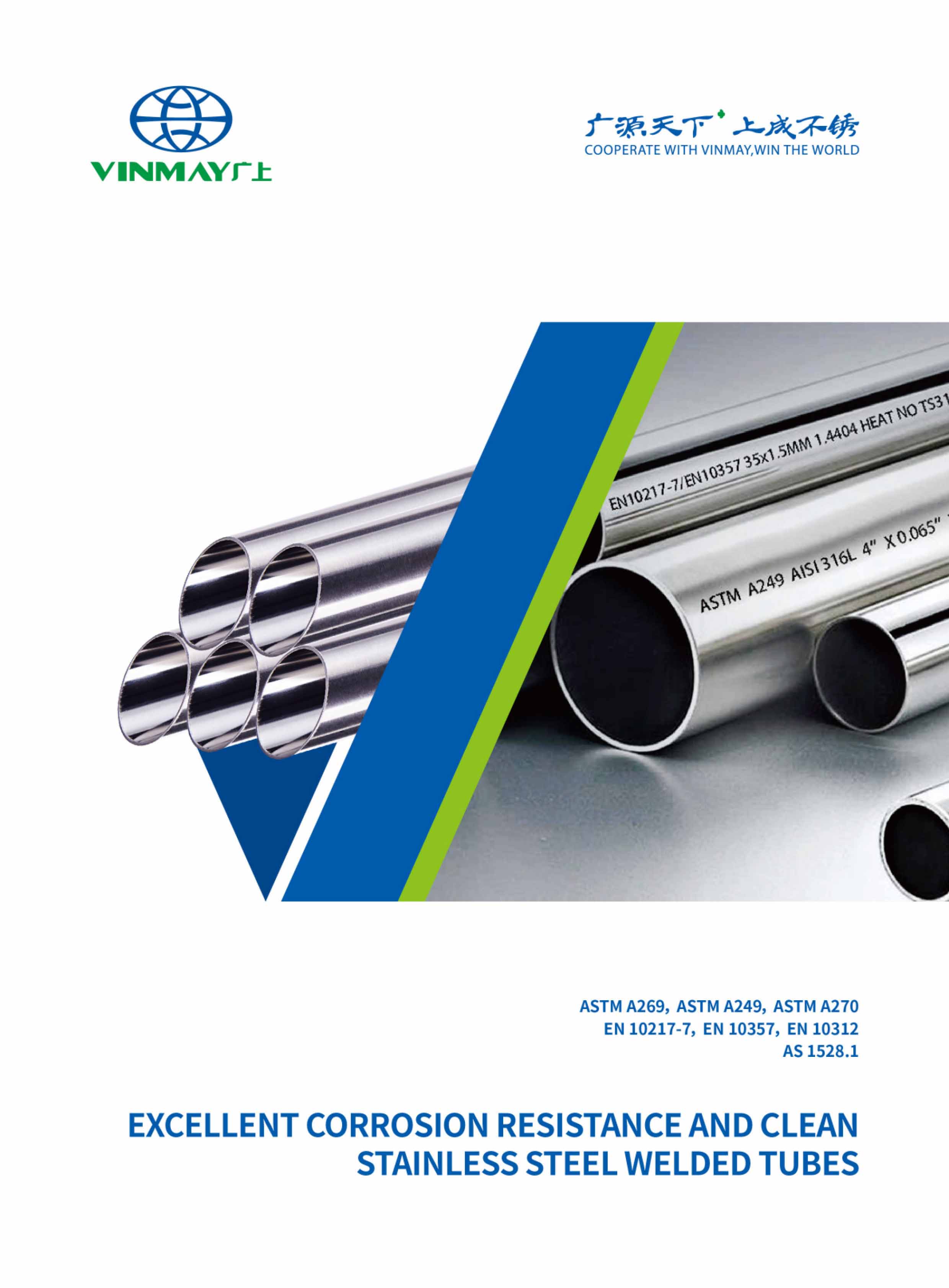When it comes to 201 stainless steel welding, there are various considerations and techniques that come into play. From understanding the unique properties of this grade of stainless steel pipe to navigating the challenges that can arise during the welding process, there is a need for precision and expertise.
The question of compatibility with other grades, such as welding 201 to 304, often arises, prompting further exploration. Delving into the uses and applications of stainless steel 201 can shed light on why mastering its welding intricacies is crucial in various industries.

The understanding of 201 stainless steel begins with its nominal composition, which typically includes elements such as nickel, chromium, and manganese.
These components contribute to the steel's physical properties, which encompass characteristics like corrosion resistance, strength, and ductility.
201 stainless steel is a type of austenitic stainless steel, which is a non-magnetic alloy containing high levels of chromium, nickel, and manganese. The chemical composition of 201 stainless steel typically includes:
Discover More :
will 201 stainless steel rust?
These values can vary slightly depending on the specific manufacturer and the intended application of the stainless steel.
Understanding the physical properties of 201 stainless steel is essential for its successful application in welding processes.
Key properties to consider include density, coefficient of expansion, electrical resistivity, and thermal conductivity.
These characteristics play a crucial role in determining the material's behavior under various welding conditions.
With a density of approximately 7.85 g/cm³, 201 stainless steel exhibits a specific gravity similar to that of other austenitic stainless steels. Understanding the density of the material is crucial for accurate welding techniques, determining welding parameters, selecting appropriate welding equipment, ensuring welding safety measures, and obtaining necessary welding certifications.
Density plays a vital role in the overall welding process, impacting the performance and characteristics of 201 stainless steel welds.
The coefficient of expansion for 201 stainless steel is a critical physical property that influences its behavior under temperature variations in welding processes. Understanding the expansion rates of this material is essential for selecting appropriate welding techniques.
It also helps in ensuring metal compatibility, managing temperature effects, and maintaining joint integrity. By considering these factors, welders can achieve optimal results when working with 201 stainless steel.
An important physical property of 201 stainless steel that significantly influences its behavior in various applications, including welding processes, is its electrical resistivity. Understanding the electrical resistivity of 201 stainless steel is crucial for determining welding techniques, heat management, joint preparation, welding quality, and welding parameters.
Proper management of electrical resistivity ensures the optimal performance of the stainless steel during welding operations.
Thermal conductivity plays a critical role in determining the heat transfer characteristics of 201 stainless steel, influencing its performance in various industrial applications.
When 201 stainless steel welding, understanding its thermal conductivity is essential for effective heat management, joint design, and ensuring weld quality.
Preheating requirements must be carefully considered to optimize welding techniques and achieve desired results in welding applications with 201 stainless steel.
Navigating the intricate process of 201 stainless steel welding presents a series of formidable challenges that demand a high level of precision and expertise. Welding techniques for 201 stainless steel must be carefully selected due to its composition, which can lead to increased brittleness and susceptibility to cracking.
Heat control is critical when 201 stainless steel welding to prevent distortion and ensure the desired mechanical properties are maintained. Achieving proper joint integrity is challenging due to the material's sensitivity to intergranular corrosion and heat-affected zone brittleness.
Surface preparation is crucial to remove contaminants and oxides that can affect the weld quality and integrity. Welding challenges such as achieving proper penetration and minimizing distortion further add to the complexity of working with 201 stainless steel.
Overcoming these obstacles requires skilled welders with a deep understanding of the stainless steel tube material and precise welding techniques tailored to its specific properties.
You may also like:
Stainless Steel Welding Issues Exploration
In mastering the 201 stainless steel welding process, several crucial points must be meticulously considered. These include:
Additionally, the judicious selection of filler metal and the implementation of effective post-weld treatments are vital steps in achieving high-quality in 201 stainless steel welding
Preparing the material is a crucial step in mastering the of 201 stainless steel welding process. Proper surface preparation is essential to ensure successful welding. It involves cleaning the surfaces to be welded thoroughly to remove any contaminants that could lead to defects.
Additionally, joint design plays a significant role in the welding process. The joint design must be carefully planned to ensure proper fit-up and alignment for successful welding.
To excel in 201 stainless steel welding, the selection of the appropriate welding method is crucial for mastering the welding process effectively. Welding techniques play a vital role in achieving strong and durable welds. Proper joint design is essential to ensure the weld's integrity and strength.
Heat control is a critical factor, as overheating can lead to distortion and reduced corrosion resistance. Thorough surface cleaning before welding is necessary to prevent contamination and ensure optimal weld quality. Additionally, precise control of welding parameters such as voltage, current, and travel speed is necessary for a successful weld.
Controlled heat input is a critical element in mastering the 201 stainless steel welding process, ensuring precise temperature management for optimal weld quality and integrity.
Heat control techniques such as adjusting the voltage, current, and travel speed are essential for maintaining the desired heat input.
Welding parameters play a crucial role in controlling the heat input effects on the base material, affecting the final weld's mechanical properties.
Temperature control methods, including preheating and interpass temperature monitoring, help prevent distortion and cracking.
Effective welding heat management ensures the proper fusion of the stainless steel while minimizing the risk of defects. By carefully controlling the heat input throughout the welding process, welders can achieve strong and durable in 201 stainless steel welding.
For optimal results in mastering the 201 stainless steel welding process, the careful selection of the appropriate filler metal is crucial. Filler selection plays a significant role in determining the success of the welding techniques applied.
Considerations such as welding parameters and joint design must align with the material properties and welding compatibility of the filler metal chosen. Different filler metal grades are available, each requiring specific welding procedures for optimal results.
Welding challenges may arise, necessitating a thorough understanding of the filler alloy options to overcome such obstacles effectively. Therefore, a meticulous approach to filler metal selection is essential to ensure a successful 201 stainless steel welding process.
Following the careful selection of the appropriate filler metal for welding 201 stainless steel, mastering the post-weld treatment process is essential to ensure the integrity and quality of the final weld.
Post-weld cleaning involves removing any residual contaminants that could lead to corrosion or weakening of the weld. Heat treatment may be necessary to relieve stresses and enhance the material's properties.
Surface finishing, such as grinding or polishing, can improve the weld's appearance and resistance to corrosion. Attention to these aspects helps prevent welding defects like porosity or cracking, ensuring a strong and durable weld.
Learning more inforamtion about stainless steel pipe welding , please go through our another blog:
How to TIG Weld Stainless Steel Pipe?
Stainless Steel Pipe Welding Procedure Specification
How to Weld Stainless Steel Tubing Like a Pro
Not Really, 201 stainless steel is a fully austenitic material wherein manganese is utilized to encourage its austenitic structure, devoid of any ferrite content. On the other hand, 304 stainless steel typically contains a minor proportion of ferrite, typically ranging between 4-6%, which assists in mitigating solidification cracking. For your specific scenario, employing a 308 filler metal for welding these materials together should suffice without encountering issues. However, for applications demanding heightened precision, opting for a 309L filler metal might be advisable.
Learn More:
What Is the Difference Between 201 and 304 Stainless Steel?
Stainless steel 201 has several uses across various industries due to its unique properties. Some common applications include:
When evaluating welding stainless steel 201 versus stainless steel 304, key differences lie in material properties, joint design, heat input, filler metal selection, and welding techniques. Understanding these distinctions is essential for successful welding processes.
When welding stainless steel 201, special considerations such as heat input, distortion control, and the selection of appropriate filler metals are crucial. Techniques like preheating, back purging, proper joint design, and post-weld cleaning aid in achieving successful welds.
Welding compatibility between stainless steel grades like 201, 316, and 430 depends on material differences. Precise welding techniques are crucial to avoid mistakes. Cost comparison is essential when considering these welds to ensure efficiency and quality.
When welding stainless steel 201, it's crucial to prioritize proper preheating, selecting the correct filler material, preventing contamination, thorough post-weld cleaning, and monitoring heat input. By avoiding these common mistakes, you ensure a successful weld.
In a cost analysis of welding processes, factors such as welding techniques, material differences, welding compatibility, and error prevention play crucial roles. Understanding these elements is essential for effective cost management and successful project outcomes.
In conclusion, welding 201 stainless steel poses challenges due to its high strength and low thermal conductivity. However, with the right techniques and equipment, the welding process can be successfully mastered.
It is possible to weld 201 to 304 stainless steel, but careful consideration must be given to the differences in composition and properties.
Overall, stainless steel 201 is a versatile material used in various industries for its corrosion resistance and durability.



